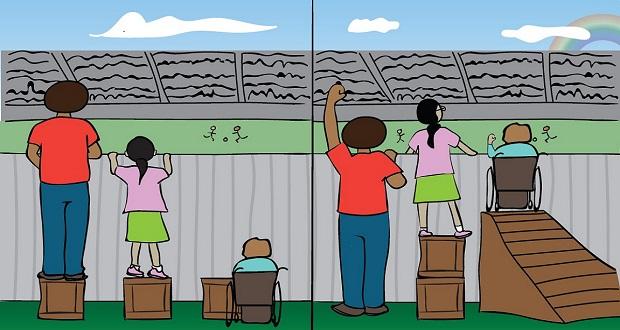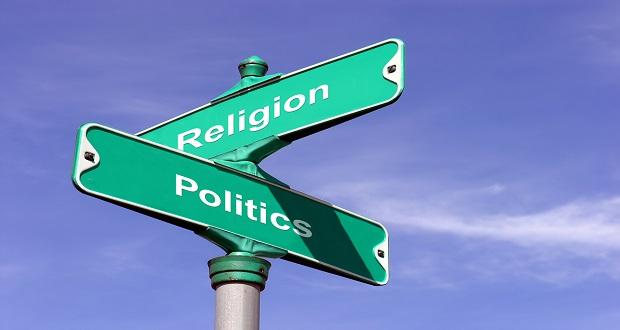
In today’s increasingly diverse workplaces, teams are no longer homogeneous. Workplaces now have more women and people of color than ever before; in fact, women, minorities, and immigrants now represent well over 50% of all those entering the U.S. workforce. We also see more individuals with disabilities, less hiding of sexual orientation, and multiple generations working alongside each other. In the guide “7 Trends for Workforce 2020: How to Make Today’s Ever-Changing Workplace Work,” the authors contend that “by 2020, baby boomers, Gen X, millennials, and now Gen Z will all be sharing the same Keurig machine.” Think of the implications of that for a moment: Given that each of these groups will bring their own expectations, priorities, and beliefs, leaders today are having to adopt new strategies for every single aspect of their organization—from recruitment, to retention, to educational opportunities… to mention just a few.
Diversity is the new norm, and the success of your company will likely depend on how successfully you manage the diversity of your teams. Click To TweetIn most organizations today, individuals with different cultural norms, values, ages, sexual orientations, disabilities, religions, and languages are all intermingling. Diversity is the new norm, and the success of your company will likely depend on how successfully you manage the diversity of your teams. One of the questions many leaders are grappling with today is: What does it take to build and successfully manage a diverse team?
What does it take to build and successfully manage a diverse team? Click To TweetDiversity Management: Then and Now
In the traditional management style, assimilation was key. Employees were expected to come in and conform to existing company norms. Their goal was to “fit in.” In this so-called “melting pot,” all employees had to dissolve themselves into the company’s culture—one that, most certainly, was established by white men, thus making the prevailing workplace culture much more challenging for women and people of color. This no longer makes sense in today’s diverse workplaces. As Dreasher asserts in “Want to Bring Diversity in? Stop Looking for the ‘Best Fit,’” effective managers need to hire for “culture add” since workers should no longer be expected to mold themselves into the traditional white, male norms of the company.
Today, a “tossed-salad” approach is likely to yield better results. Successful leaders value the contributions of diverse employees, and they welcome, appreciate, and support diversity. They understand and operate with the knowledge that there are multiple ways of thinking, behaving, and acting. For them, these differences are not a threat; instead, they are seen as a “value added” to the organization.
Successful leaders understand and operate with the knowledge that there are multiple ways of thinking, behaving, and acting. For them, these differences are not a threat; instead, they are seen as a “value added” to the… Click To TweetThe Challenges of Managing a Diverse Team and How to Do It Successfully
The challenges of managing a diverse team are numerous. In fact, the more diverse the team, the more challenging it will be. That is because homogeneous and diverse teams operate under different parameters—and the traditional management approaches no longer apply to today’s workplace.
First, we need to contend with human nature. As human beings, we tend to relate better to those individuals who are most like us. In fact, “otherness,” for some, can be puzzling, frustrating, and challenging to deal with. Sameness is familiar, comfortable, relaxing. Because of that, we will have to work hard to reach the stage where we are no longer threatened by differences. Couple that with our ethnocentric tendencies—that is, the tendency to think that our culturally-informed way of doing things is the right way—and we can easily see the challenges those trying to lead inclusively are facing.
The way we relate to each other has also changed. In the past, the “golden rule” prevailed and managers treated everyone the way they themselves wanted to be treated. In today’s environment, though, managers need to recognize the need to learn how their employees wish to be treated and adjust their behavior accordingly. In fact, there is greater emphasis on meeting employees’ individual needs.
The expectation that workers simply come in, do their job and leave no longer applies. Click To TweetThe expectation that workers simply come in, do their job and leave no longer applies. Relationship building, both in formal and informal settings, is essential in high-functioning teams. There needs to be ample opportunity for teammates to learn about and from each other, as well as opportunities for difficult, polarizing conversations to take place. This is important because employees don’t operate in a vacuum; in fact, they do bring the challenges of the outside world with them into the organization, and these outside challenges need to be addressed so employees have the peace of mind to do their best at work.
Relationship building is essential in high-functioning teams. There needs to be ample opportunity for teammates to learn about and from each other Click To TweetAnother challenge to building diverse teams has to do with our biases—and most of the time we aren’t even aware we have them. Unconscious bias refers to the pre-judgments we all make about someone based on the groups to which they belong. As mentioned, this happens without our even realizing we are doing it. This is a huge problem for leaders to contend with because biases lead to prejudicial thinking which, inevitably, results in lack of diversity in the company. Leaders today need to make sure search committees are properly trained to bring diversity in. They can ensure search processes are enhanced by sponsoring trainings focusing on topics such as the importance of valuing diversity, developing cultural competence skills, and understanding the impact of unconscious bias in candidate selection.
Despite these challenges, many organizations are already reaping the benefits of high-performing diverse teams. To accomplish the same, Gardenswartz and Rowe suggest leaders ask themselves the following:
- Am I ensuring we are doing something that matters? It is important that team members feel they are pursuing a meaningful goal and that they are playing a role in making it happen.
- Am I clear on where we are headed? It is very hard to instill passion and commitment if team members are not sure what the point is. In addition, having clearly-defined performance outcomes makes it easier to hold people accountable.
- Is the environment such that team members support each other in order to get the job done? All individuals are accountable for meeting performance outcomes. In addition to being committed to meeting their own assignments, members also need to support each other so the team can get to the finish line together.
- Am I allowing for individual and collective growth? In other words, individuals understand that their skills, competencies, ideas, value orientations, and priorities are important. However, they also need to find a way to merge those with the same attributes other team members bring to the team. When conflicts arise, either in aligning priorities or reaching consensus, they are dealt with in a way that allows the team to move forward. It is imperative that team members be open to new ways of doing things and are able to work effectively with each other and across differences.
- Am I allowing for shared laughter and fun? Laughter and fun should be an integral part of the team’s experience as they have been found to enhance quality of work and productivity. In fact, the team that plays together is more likely to stay together to get the job done.
- Most of all, do I understand and respect cultural differences? Diverse individuals engage with each other in different ways. Most likely, the way they communicate, solve problems, and deal with conflict will vary. Not everyone will “tell it like it is,” and “saving face” may be at play during conflict negotiations. Understanding how these differences will impact the team is critical.
What Inclusive Leaders Understand and Do
Every single member of your team will have commonalities and differences. These differences will be a reflection of not only their own individual traits but also of their cultural background. Leaders today need to ensure a workplace that challenges and supports individuals of all cultural backgrounds.
Inclusive leaders relate well to all types of people and make sure their organizational culture is such that it allows them to operate successfully in a diverse world. Click To TweetInclusive leaders relate well to all types of people and make sure their organizational culture is such that it allows them to operate successfully in a diverse world. In doing so, they are able to reach a diverse market, boost their company’s bottom-line profits, and ensure they will continue to attract diverse employees. Most importantly, they understand differences and are capable of working more effectively across those differences. They recognize, for example, that people of all genders today value and expect a personal and family life, and they make sure employees, especially those in the numerical minority, no longer feel they have to leave significant portions of their identity at the door. Inclusive leaders are committed to culture change and make sure no one in their organization feels like an outsider.
Inclusive leaders are able to reach a diverse market, boost their company’s bottom-line profits, and ensure they will continue to attract diverse employees. Click To Tweet

















